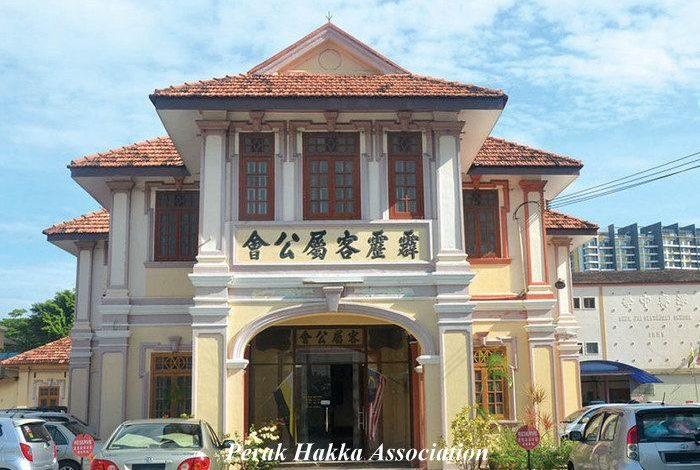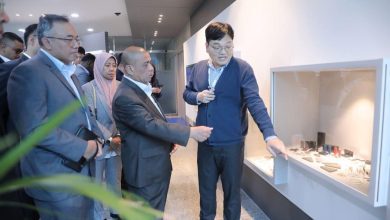

By Ian Anderson
As the Spring Festival (Chinese New Year) approaches our thoughts turn to the Chinese population of Ipoh and the Kinta Valley. Ipoh is a Chinese town or, to be politically correct, Ipoh is a Malaysian Chinese Town, although certain members of the community would not agree with either of these statements. Nonetheless, it is true, for the bulk of both Old Town and New Town were built by the Chinese. They built streets of shophouses, Clan Association, Hospitals and Schools and history reveals that in the great majority of these were Chinese miners, initially simple coolies, who made their fortunes here, becoming multi-millionaires, in the process. We call them the Pioneers.


Tin Brought Fortune Hunters
Dialect Groups
But who were these Chinese and where did they come from? The best way to answer that is to consider them in dialect groups, distinguished by pronunciation, grammar, or vocabulary, for a Chinese is not just a Chinese, but a proud member of one of the famous ethnic groups, and many still think of themselves that way. Thus there are Hakka, Hokkien, Cantonese, Teochew, Hainanese and the Foochow, to name just a few. Even then it is not that simple as each dialect group also pays allegiance to a specific region. Thus, for example, we get Kah Yin Hakka who originate from an area known as the five counties in Guangdong and see themselves as distinct from others.
Fortunes to Be Made
But why did so many Chinese flock to Ipoh? Tin! It was the lure of money to be made from tin mining that brought the Chinese to Ipoh in huge numbers. It was the dream of them all, to come to Nanyang, the Southern Seas, make their fortune from tin, and return to their villages as rich men. Sadly, very few made it as life was tough here in those early days and many died here, while others just did not gather the riches they expected, and made their lives here rather than returning to a home with so many problems. However, there were many, particularly the Hakka that did achieve those vast fortunes and lived their lives of millionaires so different to the days when they had started out as coolies in the mines.
Chinese Occupations
But let us not misunderstand the situation; apart from the Hakka, the Jews of Asia, who over the past 1000 years had migrated from Northern China and known to be hardworking subsistence-farmers, there were very few Chinese in the mines; other groups preferring to support the tin ore fields in countless other ways. They became street barbers, rickshaw pullers, cooks or servants; opened coffee shops, brothels and opium dens; were tradesmen like goldsmiths, clog makers, tinsmiths; or professionals, engineers, insurance and banking. Cantonese women, however, formed the great bulk of Amahs for the Europeans and rich Chinese.
It is from those early days that Ipoh still celebrates Hakka Noodles and Yong Tau Foo, Teochew porridge and Bak Kut Teh, Cantonese Yee Mee, Hainanese Chicken Rice – Ipoh has them all!
The Early Towkays or Pioneers
But who were these Chinese immigrants that built Ipoh, the Towkays? Whatever dialect they spoke, they were entrepreneurs and philanthropists who cared for the people, their health and their education.
Towkay Leong Fee


With four wives, two concubines and his dancing girls in his private club, Han Chin Pet Soo, he obviously enjoyed the girls. But it seems that these were not enough for him, as after he passed away, a three-year-old boy appeared at his first wife’s doorstep. The man who accompanied the child said that the child was the product of Leong Fee’s liaison with a “Mystery” lady but the lady had recently passed away. Mdm. Cheah took the child into her household. They named him Lincoln Leong Yee Khean (Liang Yi Chuan).


Towkay Yau Tet Shin


With three wives and 14 sons, it is said that the legend of the three Concubine Lanes came about as he gave one to each wife and in Chinese, they became known as First Wife’s Lane, Second Wife’s Lane, etc. The amazing thing about this man is that when he came to Malaya, he could neither read nor write!




Towkay Leong Sin Nam


As his business interests grew, so did his philanthropy. He took on major business and social projects far too many to list here, but we cannot forget his huge input into education and many schools, both Chinese and English have much to thank him for. One outstanding example of his support for education is that he even lent his bungalow in Gopeng Road to the Perak Girls’ School when he heard they were short of classrooms. But he never forgot his homeland. He was a great supporter of the revolutionary Dr Sun Yat Sen and while living in Ipoh, held several government posts in China. Locally, in 1937, he was the Chairman of the Perak Overseas Chinese Disaster Relief Fund and personally made huge donations to this and other funds to support the Chinese people.


In 1939, when his health was failing, his doctor suggested opium, but he declined as he remembered that the drug almost ruined his life when he was just 16 years old. He passed away in 1940.




Towkay Dato’ Seri Lau Pak Khuan


Such was his reputation, he was well known to the Japanese and as they invaded he had to flee the country, aided by the British Government, for to stay would have led to torture and execution. His family went into hiding close to Papan.
After the Japanese surrender, he returned to Ipoh and continued with his many many branches as well as taking government posts. Then in 1952, he was instrumental in forming Kinta Valley Home Guard as protectors of the tin mines. The first Chinese to be awarded Dato’ Seri in Malaya, he was also bestowed the Order of the British Empire (OBE) by Her Majesty the Queen and made Justice of the Peace by the Sultan of Perak.
Lau Pak Khuan was an amazing man who did so much good for the people at home and abroad and it is impossible to single out any one aspect of his life although it is recorded that it was pressure from him that brought an integrated sewerage system to Ipoh and you cannot get much more important than that!
Towkay Foong Seong


Although never a mining coolie, like his Hakka associates, he went into mine ownership and by 1930 owned many mines in the Kinta Valley and in due course used his wealth for the good of the people. He also founded the Cheng Shan Primary School, was appointed the President of the Perak Ku Kong Chow Association and Vice President of the Perak Chinese Maternity Hospital. He was also awarded Justice of Peace.




Today, the Foong Seong Villa stands as a tribute to the man who built it and which at one time had a hall to encourage an interest in one of his hobbies, Chinese opera. An artistic man who spent his leisure hours with Chinese calligraphy and poetry, he passed away at the age of 100.
Dato’ Peh Seng Koon


He was one of the founder members of the Malayan Chinese Association (MCA) in 1949, serving the MCA for 30 years becoming Director on its Board. Besides, Perak MCA Chairman and a Central Committee Member. A well-known philanthropist, being the President of Poi Lam High School, Deputy Chairman of the Yuk Choy High School and the Perak Girls High School, forming the Society for Poetry Appreciation.


But his philanthropy did not stop there but spread, like others, into hospitals, trade and industry. He is well remembered for his post-war work to improve the welfare of the Hokkien people in Malaya and China. With an eye to a new school, in 1928 the Association, under the guidance of Peh Seng Koon, purchased 12 acres of rubber estate along Tambun Road. However, this was judged to be unsuitable, as it was too far away from town and up a hill. How times have changed!
Our Apologies
For those Chinese whose ancestors are not mentioned here we apologise, there is just insufficient space to feature them all even if they played a part in building up the “Town that Tin Built”.


